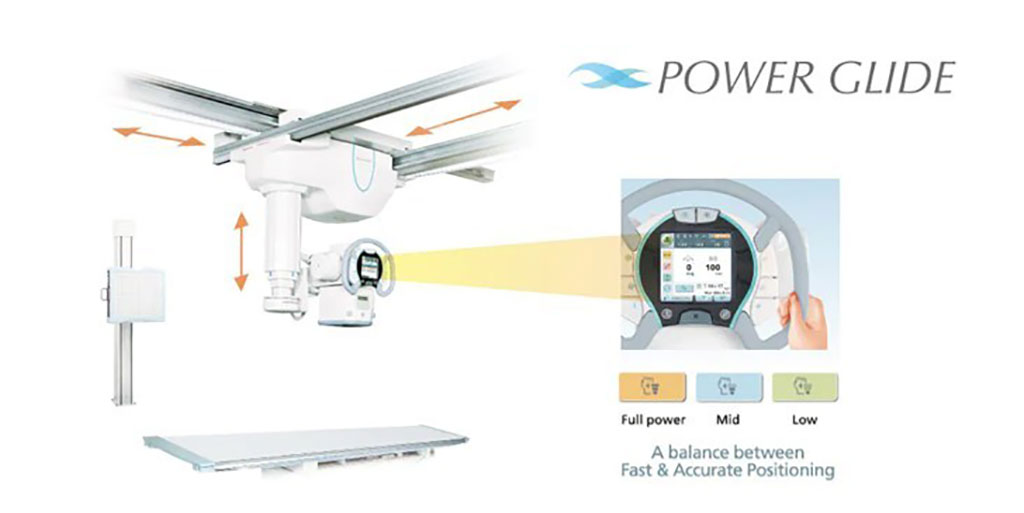Ergonomic Positioning System Reduces Radiologists Burden
By MedImaging International staff writers
Posted on 27 May 2021
Novel power assist technology rapidly calculates the amount of assist-force required to position the radiographic system head precisely in position. Posted on 27 May 2021
The Shimadzu Medical Systems (SMS; Kyoto, Japan) Power Glide system was developed for the company’s high-end radiographic systems. It is designed to instantaneously sense the amount of force applied by an operator during each movement, calculate the amount of assist-force required, and activate the positioning motors of the radiography system, thus providing effortless operating assistance for the radiographic environment. And as the force applied to the handle during operation varies among operators, the amount of power assist required differs as well.

Image: Power Glide technology aids precise, ergonomic x-ray tube positioning (Photo courtesy of Shimadzu Medical Systems)
The assist-force can be selected among three levels (low/mid/high) on the X-ray tube support touch panel. This ensures smooth operability by switching to a lower assist level for fine positioning, or to a higher assist level for performing large X-ray tube support movements quickly. Systems also include convenient functionality that makes fine positioning easier by automatically reducing the assist level whenever LED lamps are illuminated to point out the X-ray exposure field for fine positioning of the exposure area.
An extensive selection of various optional functionalities is also available, such as an auto-positioning functionality that can automatically move the X-ray tube support to registered positions; tomosynthesis functionality that can generate multi-slice images; or speed-stich functionality to generate long-view images for full spine or full leg examinations. Beyond power assist technology, Power Glide also involves innovations in sensing, shock reduction, balance, stability control, and torque control technologies that enable effortless manual operability of equipment weighing up to 300kg.
“In general radiography, the radiological technologist must maneuver an X-ray tube support assembly suspended from ceiling rails to position it to the target exposure area,” stated the company in the press release. “As general radiography is the first choice for diagnostic imaging involving many disorders found in the head, chest, abdomen, extremities and other areas, these daily procedures are used for an extremely large number of examinations. The extremely high responsiveness of Power Glide ensures the system can be comfortably and quickly positioned as intended in any situation.”
General radiography examinations require fine operability to position the X-ray exposure area to within a few millimeters by moving the X-ray tube assembly along ceiling rails. But due to the operator's risk of shoulder or lower back pain, there is a need to reduce operating loads by improving ergonomics, which also enables a smoother workflow and shortens the time that patients must maintain a particular body position during examinations.














